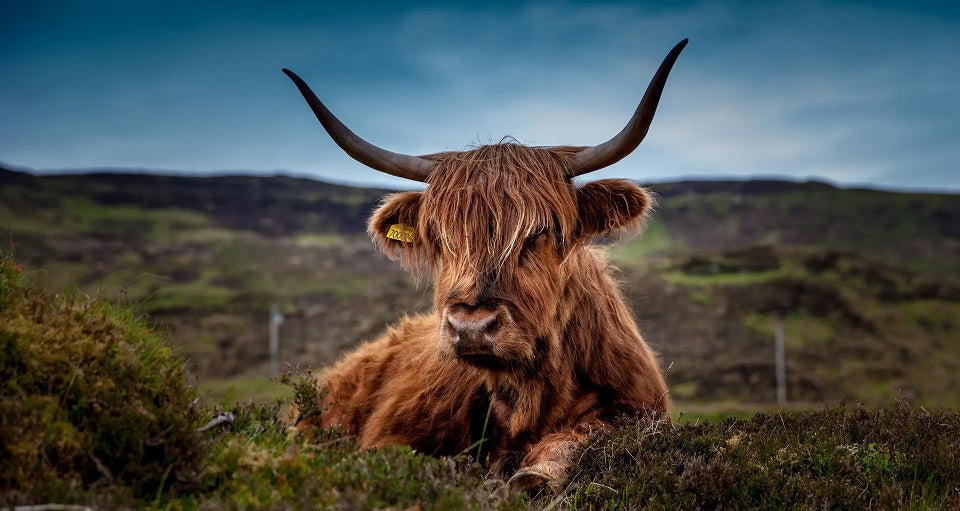What is the Paleo diet?
What is the Paleo diet?
A Paleolithic diet (Paleo diet) reflects the eating habits of humans during the Paleolithic or "Old Stone Age" era, around 2.5 million years ago. This diet comes from an era where there were changes in anatomy and physiology as humans adapted to climate shifts, mastered cooking with fire, and utilized stone tools for better access to food. Our ancestors' diet significantly influenced neural expansion, increased brain size, and reduced the size of their gastrointestinal tract. Their overall health was robust and our ancestors were very athletic.
The original human diet
It can be said that the paleo diet is the original diet of modern humans. This in contrary to the past 10.000 years (introduction of agriculture), and especially the last century where industrialization has brought about many essential advancements. These have resulted in the introduction of ultra-processed, inexpensive, and easily accessible foods. The consumption of these foods has led to a surge in health issues.
History of the paleo diet concept
The concept of the Paleolithic diet emerged in the 1970s and gained popularity with the publication of Loren Cordain's book, "The Paleo Diet," in 2002. Also known as the "cave man diet" or "Stone Age diet," it advocates returning to the dietary habits of prehistoric ancestors to influence health and performance outcomes. However, different versions of this diet have emerged from strictly carnivore to versions that include fermented dairy.
The basics of a Paleolithic diet include:
- Plants: Vegetables, fruits, tubers, seeds, nuts, and flowers.
- Animals: Land based animals.
- Seafood: Shellfish and fish.
- Insects: Various insects and products like honey, serving as a significant food source.
The basics of a Paleolithic diet exclude:
- Dairy
- Legumes
- Vegetable oils
- Grains
- Refined sugar
- Processed foods
Versions of the paleo diet
There are many versions of the paleo diet or diets based on similar principles, albeit sometimes a bit less strict. You can think of the carnivore diet, epi-paleo diet, autoimmune, paleo (AIP), Pegan diet (Paleo Vegan), ketogenic Paleo diet. There is also a primal paleo diet, normal paleo diet and strict paleo diet.
Food for thought
Even though our earliest ancestors ate a paleo diet out of necessity it is often times claimed that long term health effects remain unknown. While this might be true from a modern scientific approach, you can safely assume that our bodies have adapted and evolved on these foods. Reintroducing them in modern times nourished the body like it is used to. Failing to see this bigger picture often lead to “science based” diets that always turn out problematic in the long run. Think of low-fat high carb diets, low saturated fats high unsaturated fats diets, avoiding cholesterol etc..
Food is not most important
A crucial point that is missed in all diets that have studied and that have been claimed to be the “healthiest” diet or the “best” diet, often times based on certain geographic regions or traditional cultures, is the fact that all the people eating the “healthiest” diets have the following in common: outside living and locally and seasonally available whole foods.
Thus, instead of microfocussing on the foods or its compounds the environment and seasons should be considered as the main drivers for health and physiological responses and outcomes of food. For example: should you copy a fruit rich diet of traditional tribes in the Amazon while you live in Europe? Or should you copy a Mediterranean diet if you live in Ecuador?
Good examples of healthy, but different, diets
To emphasize the above further; take two often referenced traditional diets the Kitavan diet and the Inuit diet. They both represent traditional eating patterns of distinct populations with different geographical locations, environments, and available food sources. Both lead to exceptional healthy, vital and robust populations but they are very different.
The Kitavan diet comes from the Island of Kitava in Papua New Guinea. The Kitavan diet primarily consists of whole, unprocessed foods such as tubers, yams, sweet potatoes, fruits, vegetables, coconut, and fish. The diet is relatively high in carbohydrates, particularly from root vegetables and fruits.
The Inuit diet comes from the Arctic regions of North America, Greenland, and Siberia. The Inuit diet is characterized by a reliance on animal products, particularly fatty fish, marine mammals (seals and whales), caribou, and other game. The Inuit diet is high in fat, especially animal fats. Due to the harsh Arctic environment, plant foods are limited, and the Inuit historically had little access to fruits and vegetables. The Inuit diet is thus very low in carbohydrates and high in fat and protein.
The paleo diet frame work
A paleo diet frame work, outdoor lifestyle and local seasonal changes in diet seems to be the recipe for success. With regards to local and seasonal foods this applies mainly to plants foods like fruits and vegetables. proteins and fats (e.g. meats) are not produced with photosynthesis directly and therefore more neutral.
Seasonal changes
The normal flow of nature and the rhythms of the seasons automatically adjust your diet if you eat locally. This means that even though you are following a paleo diet, it is not a static diet. In contrary actually! Summers are typically higher in carbohydrates and sugars with many types of vegetables, tubers and fruits available. Winters are typically higher in fats and lower in carbohydrates (ketogenic). Spring and Fall are transitional seasons. So essentially you have a winter diet, spring diet, summer diet and fall diet. Just like sunlight and temperatures change with the seasons so should your diet and exercise also change.
Nose-to-tail eating is essential
Are you still eating only muscle meats? If so, you are missing out on many essential and beneficial nutrients and bioactive compounds! Organ meats is where the nature’s treasure trove is when it comes to high density nutrition. Our ancestors were not picky at all when a hunt was successful. The entire animal was consumed … from nose-to-tail! This included the organs, though chewy bits, skin, bones and fat. Not only for land-based animals but fish as well. Include these parts and you will notice the difference!
Should you count calories on a paleo diet?
The human body is an amazing system of systems with feedback systems and sensors. We can project modern man-made ideas on it but this is not needed, nature knows it all. If you are healthy and living in a natural healthy environment your body will let you know how much food you will need. It is called hunger, just like with thirst … your body will let you know how much you need to drink. The focus of Paleo nutrition is more on the quality of the foods you eat and not on how many calories you eat. Natural food with a high nutritional density in the right season and light environment satisfies better and does not upset your body.
What is the difference between a paleo diet and a conventional diet?
A paleo diet emphasizes nutrient-dense whole fresh foods and encourages avoidance of highly processed foods with added table salt, sugar, and unhealthy fats. It also excludes whole grains, standard dairy and legumes. Conventional diets typically include a broader range of foods, including grains, dairy, and legumes. Usually, it involves a higher intake of processed foods with added table salt, sugar, and unhealthy fats.
What is the difference between a paleo diet and a traditional (Weston A Price style) diet?
Traditional diets like the Weston A Price diet and the paleo diet share some common principles, as both focus on whole, nutrient-dense foods and avoid highly processed products. However, there are notable differences between the two. While both diets share a commitment to whole, unprocessed foods, a traditional diet places a stronger emphasis on traditional dietary practices. This includes more fermented foods, sprouted foods and even some grains.


